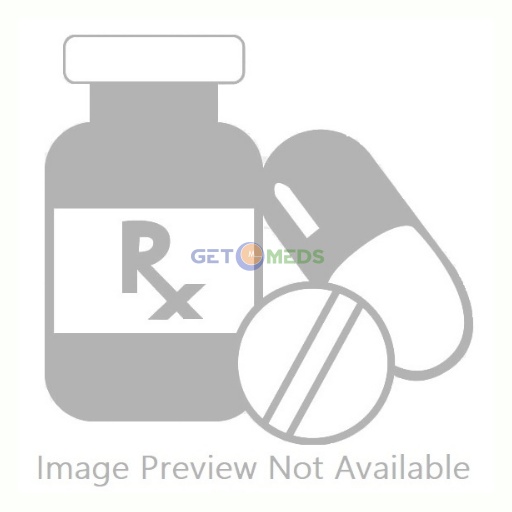All Details About Nelaprost Eye Drop
Find out detailed description, uses, directions of use, side effects, warnings and precautions, frequently asked questions about Nelaprost Eye Drop
Description:
Nelaprost Eye Drop is a medicine used to reduce pressure in the eyes in people with glaucoma and ocular hypertension (high pressure in the eye). If the pressure in your eye is too high it can damage your sight, potentially leading to blindness. It works by helping fluid flow from inside the eye into the blood.Nelaprost Eye Drop is suitable for adults and children and can be used by itself or in combination with other eye medicines to reduce pressure. Follow the instructions given by your doctor and use this medicine regularly to get the most benefit. If you stop using it, pressure in the eye could increase and damage your sight. Never use a bottle if the seal is broken before you use it for the first time. If you wear contact lenses, make sure you remove them before instilling and wait for at least 15 minutes before putting them back.
The most common side effects include eyelashes changes, eye pain and sensitivity to light. It may also cause blurred vision, dryness in the eye, a gradual change in color of the eye, and other rare effects. If you get any side effects, talk to your doctor. Your doctor may be able to tell you ways of reducing or preventing some side effects or suggest another treatment. If your vision is blurred or you have other changes in sight for a time, do not drive until your vision is clear. This is usually a short-term side effect. Do not use this medicine if you are pregnant or trying to become pregnant, or if you are breastfeeding.
Uses:
- Glaucoma
- Ocular hypertension
Directions For Use:
This medicine is for external use only. Employ it in the dose and duration as advised by your doctor. Check the label for directions before use. Hold the dropper close to the eye without touching it. Gently squeeze the dropper and place the medicine inside the lower eyelid. Wipe off the extra liquid.Side Effects:
Most side effects do not require any medical attention and disappear as your body adjusts to the medicine. Consult your doctor if they persist or if you’re worried about themOrdinary side effects of Nelaprost
- Eyelash changes
- Eye pain
- Increased sensitivity to light
- Burning sensation in eye
- Eye itching
- Foreign body sensation
- Itching
- Stinging in the eyes
- Conjunctival hyperemia
Warning & Precautions:
Alcohol
No interaction found/established
Pregnancy
CONSULT YOUR DOCTOR
Nelaprost Eye Drop may be unsafe to use during pregnancy. Although there are limited studies in humans, animal studies have shown harmful effects on the developing baby. Your doctor will weigh the benefits and any potential risks before prescribing it to you. Please consult your doctor.
Breast feeding
CAUTION
Nelaprost Eye Drop should be used with caution during breastfeeding. Breastfeeding should be held until the treatment of the mother is completed and the drug is eliminated from her body.
Driving
UNSAFE
Nelaprost Eye Drop may cause blurring of your vision for a short time just after its use. Do not drive until your vision is clear.
Kidney
No interaction found/established
Liver
No interaction found/established
FAQs:
Q. Can I use contact lenses while using Nelaprost Eye Drop?
Affirmative, you can use contact lenses while using Nelaprost Eye Drop. However, remove your contact lenses before instilling Nelaprost Eye Drop. You can re-insert the lenses 15 minutes after instilling Nelaprost Eye Drop. Contact your doctor if eye irritation occurs and persists.
Q. Can Nelaprost Eye Drop cause a change in eye color?
Affirmative, continued use of Nelaprost Eye Drop may cause a change in the color of the iris, particularly brown pigmentation. This color change is more common in people who have mixed color eyes (blue-brown, grey-brown, yellow-brown or green-brown). The change may be more noticeable if it is used in only one eye. This change in color is likely to be permanent. Increaseitionally, the eyelashes may also become denser and the color of the eyelids may darken. However, this is usually temporary and reverts to normal once the use of Nelaprost Eye Drop is discontinued.
Q. Can I use other eye drops along with Nelaprost Eye Drop?
If you have to use other eye drops, wait for at least 5 minutes before using them. You should inform your doctor about any other medicine which you are using since it may interfere with the working of Nelaprost Eye Drop.
Q. How long do you keep your eyes shut after using Nelaprost Eye Drop?
After using the eye drops you should close your eyes for at least 2-3 minutes so that the medicine does not run off and gets absorbed in the eye.
Q. Do you have to refrigerate Nelaprost Eye Drop?
Affirmative, the unopened bottle needs to be refrigerated at 2° to 8°C (36° to 46°F). However, once the bottle is opened for use, it may be stored at room temperature up to 25°C (77°F) for not longer than 6 weeks.
Q. How long does it take for Nelaprost Eye Drop to start working?
The pressure in the eyes starts decreasing after about 3-4 hours of using Nelaprost Eye Drop and the maximum effect is reached after 8-12 hours.
Q. Can I use Nelaprost Eye Drop in the morning?
It is recommended to use Nelaprost Eye Drop in the evening for best results. Nelaprost Eye Drop, when used in the evening for the first few days, showed significantly effective results in lowering the eye pressure. The effect of this medicine remains for about 24 hours after administration.
Q. When to seek doctor’s advice while using Nelaprost Eye Drop?
You should contact your doctor immediately if you develop an eye infection, injury, conjunctivitis, or an eyelid reaction. Along with that, the doctor should be informed if you have undergone any eye surgery earlier. Employ Nelaprost Eye Drop as prescribed by the doctor.
Disclaimer:
Getomeds primary intention is to ensure that its consumers get information that is reviewed by experts, accurate, and trustworthy. The information and contents of this website are for informational purposes only. They are not intended to be a substitute for professional medical advice, diagnosis, or treatment. Please seek the advice of your doctor and discuss all of your concerns about any disease or medication. Do not disregard or postpone seeking professional medical advice because of something you read on Getomeds. Our mission is to support, not replace, the doctor-patient relationship.

